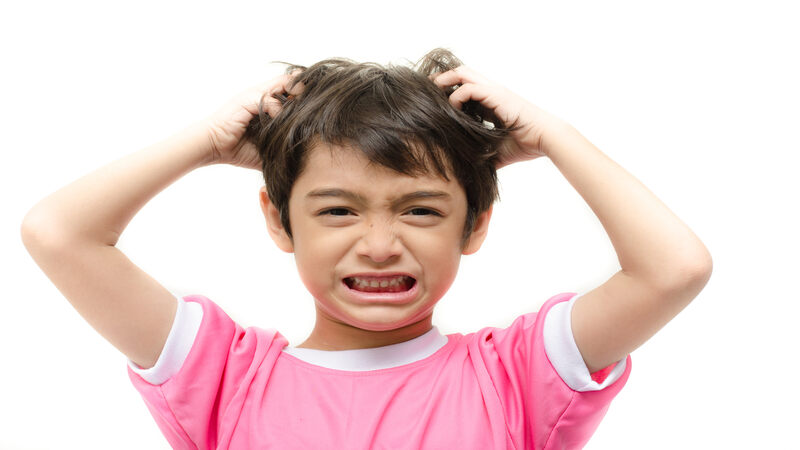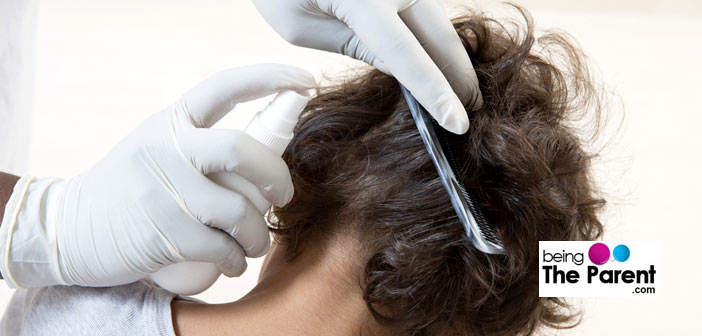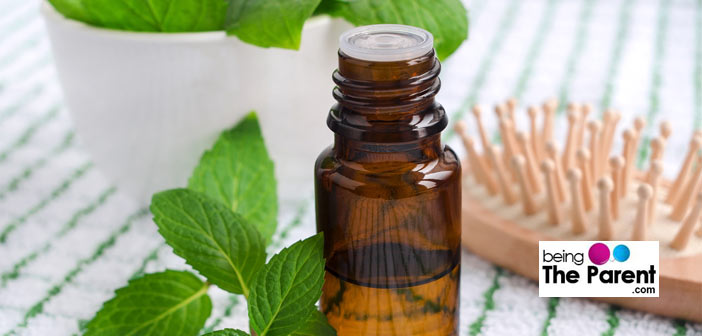
Lice (जूं in Hindi) infestation is one of the most common and annoying problem during the school and play-school years. The thought of tiny insects crawling on your head surely gives one jitters, think about the ordeal your little one goes through when he/she mercilessly scratches the head. Often, the reason behind this behavior of your child goes unnoticed by you, which in turn is leading to a wholesome haven for lice in your child’s head! Sometimes, this may cause difficulty in sleeping or concentrating on studies.
Read below on how to detect lice and remove them gently:
What is Head Lice?
A head lice is a tiny insect measuring about 3mm with 6 legs and crawls on scalp and hair. It feeds by sucking blood and lays eggs (nits = लिखें). The eggs appear to be small white flakes about the size of a pin head, stuck firmly to the hair and are mostly found close to the scalp. Sometimes you may overlook lice, since they are small, move quickly and difficult to spot in dark colored hair. Similarly, nymphs or baby lice may be difficult to spot in light-colored hair since it is light in color. These nymphs develop into an adult lice in about 1-2 weeks
Symptoms of Head Lice
Some of the symptoms of lice are:
- Itching: If your little one is unable to keep his or her hands off the head, then there is a reason to peer into the head. Itching occurs when lice suck blood from the scalp fueled by the sensation of hundreds of tiny insects crawling on the scalp. Lice mostly nestle at the nape of the neck and behind ears. So check these places for possible infestation
- White shiny dots: If you spot hundreds of small white dots stuck to the hair, these may be nits. Unlike dandruff which can be easily brushed away in most cases, nits have a fixed hold over hair strand. These are mostly found either close to the scalp or as empty eggs sacs in the form of shiny whitish dots at the end of hair strands
- Wounds: Sometimes kids have already scratched their heads all over leading to wounds. These wounds may develop crusts or pus. This may also lead to burning sensations and constant pain
- Rash: Red, itchy spots on the back, just below neck due to droppings of the lice
Does Head Lice Spread?
Yes, head lice is very contagious. These small creatures have claws that enable them to cling to hair or even another person and are most widely spread when children are in groups – schools, sport camps, child care centers etc. Apart from head to head contact, they can also spread through shared clothes, using shared combs and brushes, through beds and hats and other hair accessories.
Head Lice Treatment
Lice are very contagious. They can easily travel from one person to another. This is the case when young children sit together, play and peer into the same book with heads close to one another. Apart from this, lice can be passed on through the medium of comb, scarf, cap, clothes, pillows and sharing the same bed.
So how to get rid of these pests with minimum hassle?

Medical Ways To Get Rid Of Lice
- Anti-lice shampoo: These are easily available over the counter. Remember, this contains chemicals and insecticides or even pesticides.
- Always read all the instructions carefully before applying
- Usually this shampoo must be massaged at the roots and left on the scalp for 10-12 minutes, rinsed with lukewarm water and combed to remove any lice
- Make sure that none of the soapy water gets into the eyes and mouth of your little one
- Medicare anti lice shampoo is one of the shampoos available in the market since over four decades
If your child has any allergies or medical condition, its best to discuss freely with the doctor, who may suggest a different medical shampoo
- Anti-lice agents: Do not use anti-lice agents such as Lycil on kids below 2 years of age
There is no quick fix or a one-time shampoo to get rid of this mess. Strictly follow the intervals between shampooing, these are devised to break the growth cycle of lice and essential for lice-free hair.
Home Remedies To Treat Head Lice
-
- Combing: Most shampoos may be successful in killing live lice. However, the nits remain unaffected. Special metal nit combs are available to pull out the nits. Refrain from using this on very young children. Your motto should be to keep the hair clean as far as possible. Since it’s not possible to shampoo frequently, resort to combing. You may consider oiling for smoother combing
- For girls, follow this combing method: Wet hair, liberally apply conditioner and comb from the roots to the end of the hair. Conditioner acts as a detangler and prevents lice from running around
- Essential oils:
- Lavender oil: prevents recurrence of lice and also soothes the scalp
- Tea tree oil is quite popular in this regard, however you may want to dilute it with other oil such as olive oil or our very own coconut oil and give a light head massage
- Since essential oils should be used judiciously as they may irritate the scalp, you may mix them with the shampoo, let it stay for up to half hours, comb and rinse off

4. Neem Leaves: Boil neem leaves and rinse off the hair, make this the last rinse
5. Clip the hair:Consider clipping the hair, it’s just going to make the task more manageable. Nit picking by hand would also become easier
6. Onions to the rescue! Crush onions or grind them in a mixer, pass the paste through a sieve and apply the obtained juice on the scalp. Let it remain for about an hour and wash off
7. Try this paste: Crush 7-8 almonds, add 3 tbsp lemon juice, apply this paste on the scalp, let it remain for about 30 mins and rinse off
8. Try Vineger: Massage and rinsing hair with a mixture comprising 50% water and 50% white vinegar
9. Olive oil: Simply apply olive oil mixed with lime juice, cover the head with a shower cap and wash off with a shampoo containing tea tree extracts, neem or Biotique Henna Shampoo
10. Try Mouthwash: Try rubbing Listerine mouthwash on the scalp and rinsing off with the regular shampoo. Listerine has antibacterial properties
How to Prevent Lice
- Check other family members for possible infestation
- Wash all clothes with hot water
- Change bed sheets and pillows daily
- Keep combs separate for each person and ensure they are always clean
- Restrict combing on the carpet
- Advice other family members to use anti-lice shampoo till the lice is completely cleared
Lice often poses an embarrassing situation and gives an impression of poor hygiene. It’s best to deal patiently with this, combing regularly using the nit combs followed by anti-lice shampoo. Encourage your kid to avoid sticking head closer to his/her friend and this may lessen the agony of itchy, pesky creatures on the scalp. Lastly, you need to diligently watch your child’s head, the earlier the lice is detected, easier the removal. Why not bond with him over a light head massage?
